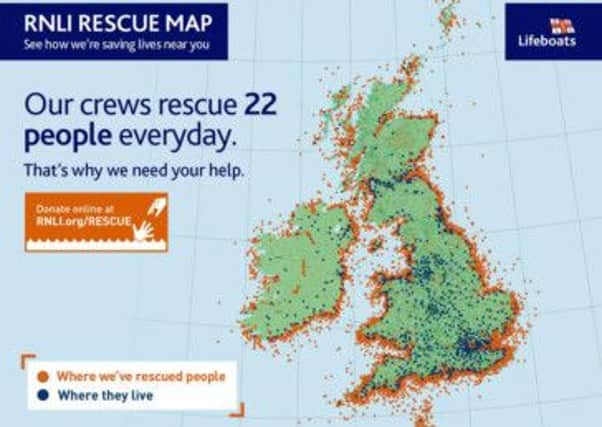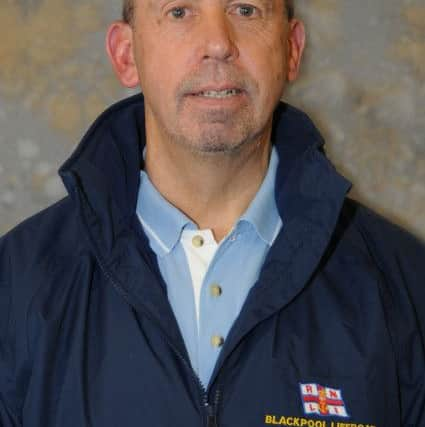Map sparks calls for sea safety talks


Members of the Royal National Lifeboat Institution and HM Coastguard made the plea following the release of a new RNLI incident map highlighting how many times lifeboat crews have rescued people who do not live on the coast.
The map shows where people live in relation to where they were rescued in 2012, prompting emergency crews on the Fylde coast to urge schools to act.
Advertisement
Hide AdAdvertisement
Hide AdPaul Parton, from Blackpool Lifeboat Station, said: “To stay safe when you are by the sea you have to use your common sense and whether they live locally or away from the coast they need educating from a young age.


“I know children receive road safety from a very early age and that’s one of the ways we can reduce risks, through education.
“When we rescue someone we look at where they come from and it is a mixture.
“If people are aware of the dangers and how they can get into trouble then that’s half the battle, but they need to be educated in sea safety.
Advertisement
Hide AdAdvertisement
Hide Ad“We are one of the biggest holiday resorts in the UK and it’s not surprising people come here and don’t understand the dangers.”
Between June and August, crews on the Fylde coast were dispatched 62 times, up from 51 in 2012.
Ged Lynch, a watch assistant for Liverpool Coastguard, the agency which conducts all of the Fylde coast’s rescue operations at sea, said: “We give out messages on a regular basis over the summer and we go into schools where people don’t live on the coast.
“The vast majority of people we rescue are from inland who come down for the day and don’t check the tide.
Advertisement
Hide AdAdvertisement
Hide Ad“They will go on to the beach when there’s no water near them but a few hours later they will be trapped.”
Howard Ramm, head of lifesaving operations at the RNLI, said: “The orange dots show where we rescued people last year – 22 a day – on average – round the coast, round the clock.
“Many were in considerable danger. But what’s just as interesting are the blue dots, where these people live.
“As you can see, they live across the country, maybe even on your street.
“Maybe one day, it could be you.
“No one knows when they’ll need the RNLI.”
Follow us on twitter @The_Gazette and like our page on facebook to keep up with all the latest news.